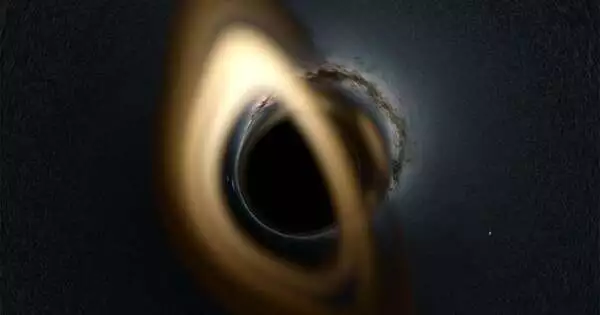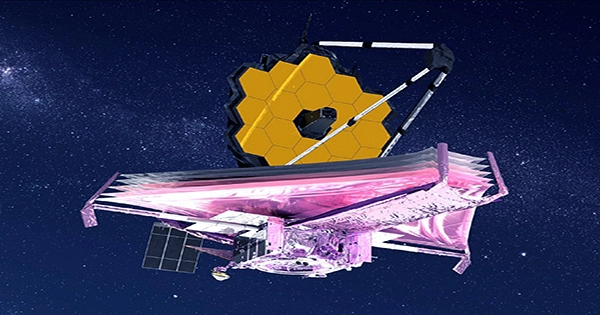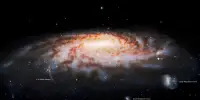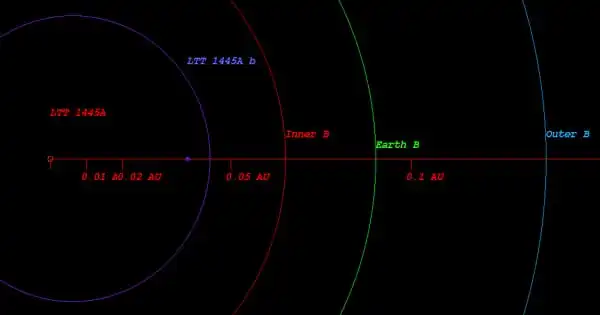Supermassive black holes have between a hundred thousand and ten billion times the mass of our Sun. As of 2022, there are over 150 confirmed supermassive black holes in our local Universe (with direct mass measurements). They are typically found at the centers of large galaxies, such as the Milky Way.
Two astrophysicists at the Harvard-Smithsonian Center for Astrophysics have proposed a method for observing what could be the second-closest supermassive black hole to Earth: a behemoth 3 million times the mass of the Sun hosted by the dwarf galaxy Leo I.
An independent team of astronomers proposed the supermassive black hole, known as Leo I*, in late 2021. The team noticed stars speeding up as they approached the galaxy’s center, indicating the presence of a black hole, but imaging emission from the black hole was not possible.
Now, CfA astrophysicists Fabio Pacucci and Avi Loeb propose a new way to confirm the existence of the supermassive black hole in a study published today in the Astrophysical Journal Letters.
“In our study, we suggested that a small amount of mass lost from stars wandering around the black hole could provide the accretion rate needed to observe it. Old stars become very big and red—we call them red giant stars.
Fabio Pacucci
“Black holes are very elusive objects, and they sometimes enjoy playing hide-and-seek with us,” says Fabio Pacucci, lead author of the ApJ Letters study. “Light cannot escape their event horizons, but the environment around them can be extremely bright if enough material falls into their gravitational well. However, if a black hole is not accreting mass, it emits no light and becomes impossible to detect with our telescopes.”
This is the problem with Leo I, a dwarf galaxy so devoid of gas that it is frequently referred to as a “fossil.” So, do we give up hope of seeing it? Perhaps not, say astronomers.
“In our study, we suggested that a small amount of mass lost from stars wandering around the black hole could provide the accretion rate needed to observe it,” Pacucci explains. “Old stars become very big and red—we call them red giant stars. Red giants typically have strong winds that carry a fraction of their mass to the environment. The space around Leo I* seems to contain enough of these ancient stars to make it observable.”

“Observing Leo I* could be groundbreaking,” says Avi Loeb, the co-author of the study. “It would be the second-closest supermassive black hole after the one at the center of our galaxy, with a very similar mass but hosted by a galaxy that is a thousand times less massive than the Milky Way. This fact challenges everything we know about how galaxies and their central supermassive black holes co-evolve. How did such an oversized baby end up being born from a slim parent?”
Decades of studies show that most massive galaxies host a supermassive black hole at their center, and the mass of the black hole is a tenth of a percent of the total mass of the spheroid of stars surrounding it.
“We would expect a much smaller black hole in the case of Leo I,” Loeb continues. Instead, Leo I appears to host a black hole similar to the Milky Way’s, with a mass a few million times that of the Sun. This is exciting because science usually makes the most progress when the unexpected occurs.”
When can we expect to see an image of the black hole?
“We haven’t arrived yet,” Pacucci says. The team has obtained telescope time on the space-borne Chandra X-ray Observatory and the Very Large Array radio telescope in New Mexico, and the new data is currently being analyzed.
Pacucci says, “Leo I* is playing hide-and-seek, but it emits too much radiation to remain undetected for long.”
















